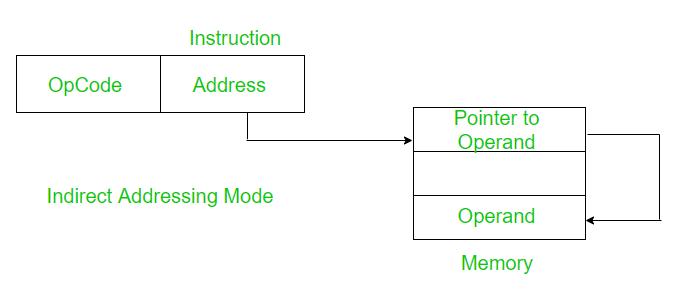前提条件–寻址模式
1.间接寻址模式:
这是寻址方式,其中指令包含目标地址存储位置的地址。因此,以这种方式将目标位置的地址间接存储在另一个存储位置中。因此,它被称为间接寻址模式。

间接寻址模式有2种(或版本):内存间接和寄存器间接。
- 间接内存–
在这种类型中,我们直接在指令中用括号括起来或在’@’字符之前提及存储位置的地址。例子 :
LOAD R1, (1005) or LOAD R1, @1005 - 间接注册–
在这种类型中,目标存储单元的地址将存储在寄存器中,并且该寄存器将在指令中提及。例子 :
MOV R@, 1005 LOAD R1, (R2)
2.隐式寻址模式:
这是寻址方式,其中在指令的定义中隐式指定操作数。通常在零地址(例如,堆栈操作)和一个地址(例如,MUL AL)指令中使用此寻址模式。因此,操作数隐含在指令内部,称为隐含寻址模式。
例子 :
MOV CL, 05
L1: INC AL
LOOP L1 每次循环执行时,AL将增加1。因此,指令INC AL内含1。
间接和隐式寻址模式之间的区别:
| Sl. No | Indirect Addressing Mode | Implied Addressing Mode |
|---|---|---|
| 1. | Multiple memory spaces are used. | No memory Intervension |
| 2. | Operands are explicit | Operands are implicit |
| 3. | Mostly used in 2 address instructions and more | Mostly used in zero address and single address instructions |
| 4. | 3 memory references are required | No memory references are required |
| 5. | Address space is large | Address space is small |
| 6. | Additional calculations are the only way to perform operation | No additional calculations are required |
| 7. | Execution speed is less | Execution speed is more |